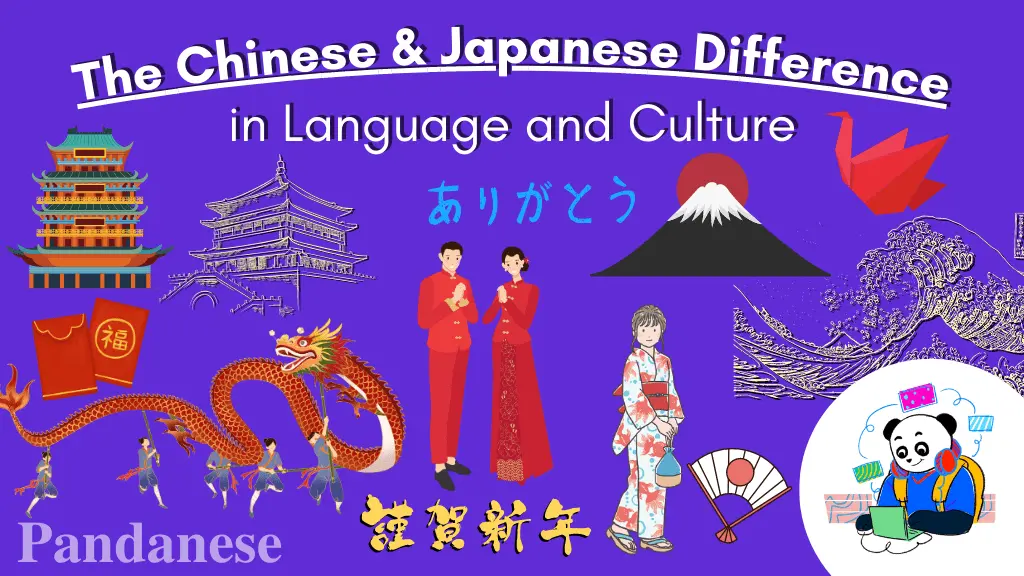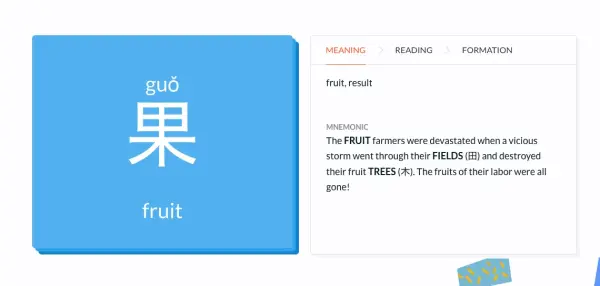
How to Tell the Difference Between Japanese and Chinese Language and Culture
Many people may not be aware of the Chinese and Japanese differences in culture and language.
It may be difficult to tell the difference between Japanese and Chinese culture to many people. However, the two countries are as different as Australian and American cultures. Once you have identified the basic differences, it will be easier to distinguish between the two cultures.
Understanding a bit more about Japan and China's social cues and language will help you better understand the profound differences between these two ancient cultures.
This article will highlight three key differences between Japanese and Chinese cultures: social manners, cuisine, and language.
What is the difference between Japanese and Chinese social manners?
1. Rules of etiquette
Although both Japanese and Chinese people are quite polite, Japanese society emphasizes manners and social hierarchy more than the Chinese do.
So in Japan, you should never be casual or familiar with someone significantly older than you or someone with a higher social rank. It is not as strict in China as there is in Japan.
Additionally, both nations are formal with their elders. Still, the Japanese are also formal, even with people who are only one or two years older than them. For example, if you were a freshman at a Japanese university, you would be polite and formal with fellow students in their second or third year of university.
Furthermore, the Japanese observe high levels of self-discipline and decorum in public. You can hardly see Japanese people arguing about something or expressing their anger in public. In contrast, Chinese people don't hesitate to let their emotions show.
2. Greeting etiquette
Chinese and Japanese people bow their heads when greeting someone for the first time. The difference between the greeting style of the two countries is that Japanese people tend to be more strict about bowing in that they usually consider seniority and the age of the person they're greeting.

Bowing before conducting professional business
You can replace a bow with a Western-style handshake in China unless it is a business or you greet someone older than you. Chinese people may also nod their heads to show respect while shaking hands. Meanwhile, in Japan, a short nod of the head would be considered rude unless you greet a close friend who is similar in age to you or younger.
3. Public behaviors
Suppose you listen to a Chinese person and a Japanese person speaking. In that case, you can easily tell their nationality depending on how loudly they speak.
Japanese people appreciate a calm demeanor and respect privacy in public places. For example, they will be quiet on trains, even when there's no one around, and if they need to speak in public, they will do it as quietly as possible.
On the other hand, the Chinese don't have any cultural prohibition against speaking loudly in public places. So if you see a group of Asian people laughing, talking, and answering their phones loudly, they're likely to be Chinese.
4. Gestures and nonverbal communication
Chinese and Japanese cultures rely extensively on gestures and nonverbal communication.
In Japan, there is a great emphasis on greeting new people with a bow. The deepness of the bow and the distance between you and your partner says a great deal about your relationship. So, you can distinguish between a Chinese and a Japanese person by watching how close they stand when they talk to another person and how respectful and submissive their body language is.
Another example of nonverbal communication is that silence between Chinese people is often considered an agreement to do something. If someone disagrees, they will talk around the subject and emphasize the negativities before telling you what they would rather do. It is a similar situation in Japanese culture to avoid direct confrontation.
Additionally, since the Chinese language is tonal, the Chinese can not rely on their tone of voice to express their meaning, which makes gestures and body language far more important. Compared to the Japanese language, they have a translated term called reading the air or atmosphere, which means that not everything will be said directly. You must infer based on the context of the conversation and other people's gestures.
What is the difference between Japanese and Chinese cuisine?
Many people mix up Chinese and Japanese food because of their similarities, such as. However, many notable differences exist between Japanese and Chinese cuisine in ingredients, cooking methods, and flavors.
1. What are the common ingredients in Japanese and Chinese cuisine?
The Japanese tend to consume a lot of raw dishes, particularly seafood, while the Chinese often fry things. Also, when it comes to meat, Japanese people tend to use beef, chicken, and fish, while Chinese people love pork, chicken, beef, and fish. Though rice is widely used in both cuisines, it's cooked differently and has different uses.

Examples of Japanese food

Examples of Chinese food
For example, it is common to see seafood as the main dish and rice as the side dish in Japan, while rice is the core ingredient in China. Both rice is different because Chinese rice is thinner and longer, while Japanese rice uses short-grain rice.
Additionally, Chinese cuisine is usually fried and mixed together with rice, vegetables, eggs, and sauce. While in Japanese cuisine, food is often steamed and served separately. The Japanese also minimally seasoned their seafood because of its umami taste, a savory and satisfying taste that's not too empowering.
2. What are the common Chinese and Japanese spices?
Here are the most common Chinese spices, herbs, and seasonings:
spicy peppercorns
hot mustard
five-spice
powdered spring onion
soy sauce
star anise
cumin
fennel
bay leaves
oyster sauce
rice wine
spicy bean paste
In contrast, the most common Japanese ones are:
bonito fish flakes
soy sauce
mirin (sweet vinegar)
miso
seaweed
light fish broth
chili pepper mix
sesame, black pepper
ginger
wasabi (Japanese horseradish)
You can notice that Japanese food tends to have light seafood flavors, while the Chinese prefer spicy flavors.
3. What is the Chinese and Japanese difference in flavor?
Japanese cuisine tends to showcase more subtle flavors than Chinese food. Japanese foods represent a part of their culture: light-tasting, healthy for the heart and waistline, whereas the Chinese love spicy and flavorful dishes.
What is the difference between Chinese vs Japanese language?
If you thinking if you should learn Chinese or Japanese, we have a separate article just for that: Which Language Is Right for You? Should I Learn Japanese or Chinese?
1. Japanese vs Chinese writing
While the Japanese have three different written scripts, there is only one Japanese language.
Meanwhile, China has only one script but many different languages that use the same script. Both the Japanese and Chinese written languages use Chinese characters, also known as hanzi in Chinese and kanji in Japanese.

Japanese vs. Chinese writing: Both use characters to represent meaning. However, some are false cognates; LingoDeer
Chinese Hanzi characters are logograms, which are symbols representing a word without expressing its pronunciation, developed for the writing of Chinese. They have been adapted in other East Asian languages and remain a key component of kanjiーthe Japanese writing system.
Additionally, there are many dialects in Chinese languages, each with its own dedication to study. While there are dialects in Japanese, you will be okay just knowing Japanese compared to if you want to study Mandarin or Cantonese.
2. Japanese vs Chinese grammar
Both languages have different grammar and sentence structures.
Generally, the verb goes at the end of the sentence in Japanese. The verb endings show tense and mood and have other significant meanings. Chinese does not have verb endings but uses "helping verbs" to show these meanings.

Japanese vs Chinese writing, The Spanish Group
Japanese also uses particles after nouns or pronouns to show the relationship between words in the sentence. While the Chinese language has particles, it is not as complex as Japanese particles. Instead, word order is important to show relationships between words.
Overall, Japanese grammar is a little more complicated than Chinese.
3. Which is easier to speak? Japanese vs Chinese speaking
Though Chinese has various dialects, they have one thing in common: all of them are tonal languages, meaning that a person's voice changes (rises or falls) depending on what they're saying. So, one word in Chinese can have four different tones with four different meanings.
Additionally, Chinese has many variations, such as Shanghainese, Mandarin, and Cantonese. Each language has its own rules, which means sometimes people speaking Mandarin don't understand what someone is saying in Cantonese.
Japanese is quite the opposite, as it's a relatively monotone language. However, Japanese speakers may change the tone of their voice to express emotion or intention, just like how English speakers raise their tone at the end of a sentence to indicate a question. Additionally, Japanese does have variations, so once you learn this language, you can speak it everywhere in Japan.
The Japanese language has only five vowel sounds and about 100 different syllables that can be arranged in limited ways. On the other hand, Chinese has multiple vowel sounds depending on a vowel's position in a word and the tone in which it's said
So, if you hear fewer vowel sounds or less variation between words, you are likely listening to a Japanese speaker. If you hear a lot of vowel sounds, you're probably listening to a Chinese speaker.
4. Which language should I learn? Japanese vs Chinese language?
Why learn Chinese?
Chinese is the second most spoken language in the world. With that popularity, learning Chinese can offer opportunities to study abroad and broaden your professional career.
There are many ways for a beginner to learn Chinese, and one of the most effective ways to learn Chinese is to use Mandarin flashcards. With the best Chinese flashcard app features, you can learn Chinese vocabulary fast instead of handwriting hanzi characters. So Pandanese out.

Example of Pandanese learn function
Pandanese is an Chinese language platform that helps users master Mandarin mnemonics with amusing Chinese flashcards and a spaced repetition learning method. Once you sign up, you will receive a batch of new words daily. Learn online or use the Pandanese App. Each one of the flashcards has a hanzi, pinyin, its meaning, and a fun story to help you remember Chinese vocabulary better.
Why learn Japanese?
Besides kanji, the Japanese use two phonetic alphabets called hiragana and katakana. Hiragana looks more cursive and is the widely used form of these two kanas.
If you see hiragana characters in a piece of writing, you're probably looking at something written in Japanese. Here is a comparison of the hiragana and katakana Japanese writing systems:

A comparison between kanji, hiragana, and katakana characters, Quora
As you can see in the picture, hiragana characters are curvy, light, and easy to tell apart from the angular, complex kanji. Meanwhile, katakana is used for loan words transliterated from another language, such as English.
In closing
Have a better grasp on Japanese vs. Chinese culture and language? Understanding these differences will allow one to appreciate these two unique cultures better.
The easiest way to learn Chinese & build vocabulary

